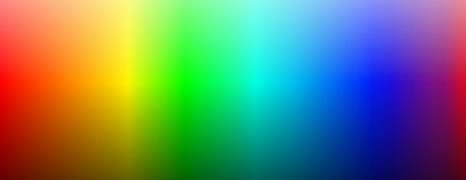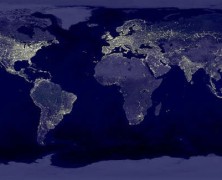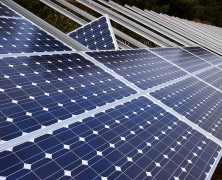Installing LED lights in your business, warehouse or home is the first step toward realizing a dramatically lower lighting bill. The next step is to program LED strip lights to connect with occupancy sensors, timers and smart controls to maximize the greatest savings possible. As demand for green technology and efficient use of resources continues to grow, networked LED lights have become a crucial component in the modern energy retrofit. Energy efficiency investments could total $959 billion from 2014 to 2023, according to forecasts by Navigant Research. One thing is for sure: when it comes to effective ways to save energy on your lighting bill, LED-based lighting systems are impossible to beat. To start with, LEDs are incredibly efficient. Thomas Edison’s incandescent lightbulb, which brought electric light to the 20th century, produces just 16 lumens per watt. In comparison, most commercially available LEDs produce anywhere from 60 to 100 lumens per watt. But the efficiency of LED technology doesn’t end at the diode; its ultimate energy-saving superiority lies in its advanced control capabilities. Using LED-based automated systems, lights can be programmed to turn on and off automatically when people enter a room. Further, dimming and other advanced features can be controlled externally via smartphones or software connected to the internet. This networked management is possible because LEDs can be switched off and on digitally, and can easily be finely adjusted for both brightness and color temperature. Highly advanced LED-based lights can even be tuned to correspond to natural sunlight entering the room in a method of lighting known as daylight harvesting. Advanced daylight harvesting uses sunlight entering a room from windows and skylights and adjusts the LED lighting system to automatically add the necessary light to meet the room’s predetermined brightness level. Changing to LED lighting...
Benefits Of The LED Color Spectrum
posted by Flexfire LEDs
LEDs are more energy efficient. LEDs last longer. These claims are becoming more and more prevalent, and rightfully so. But this breakthrough light source represents another tremendous advantage, one that is far less well known: the LED color spectrum. The “white” visible light emitted naturally by both the sun and artificial light sources is actually composed of a range of colors. These various colors can be viewed when the light is refracted through a dispersive prism. The different colors of light represent different wavelength frequencies — the typical human eye can perceive wavelengths from about 390 to 700 nm. While sunlight is composed of the richest compilation of color (within it you will see all the colors of the rainbow), many other forms of artificial “white” light are missing wide swaths of the color spectrum. Looking at the color distribution of incandescent (top) and CFLs (bottom) in the charts below, we see that there are large sections of the full spectrum missing from each of these forms of white light. In incandescents, the lower wavelengths of blue, green all the way to yellow are found at a greatly diminished value. In CFLs, on the other hand, the apparent white light is something like a visual trick, composing narrow bands of violet, blue, green and orange color frequencies to trick our brains into thinking we’re seeing white light. Below is the color spectrum found in LEDs. Notice how the LED color spectrum is heavier on the blues, and claims a more even distribution than CFLs or red heavy incandescents. The reason for this is that many LEDs are run using more efficient blue chips which shines through a phosphor coating that turn the light white. So what’s the difference between the LED color spectrum and the spectrum found in other artificial light sources? The main difference is that the LED spectrum is closer to natural daylight than incandescents, which more closely resemble sunset light, or CFLs, which are composed of narrow bands of light. The color spectrum of LED lights signal to our body’s internal circadian rhythm, a critical player in cognition and mood, that we are in a daylight situation. This makes us feel more alert, in addition to helping fight symptoms of depression. In contrast, incandescents, heavy on the red spectrum, can actually decrease alertness and increase fatigue. Interestingly, the LED color spectrum has also proven beneficial in poultry LED lighting. Chickens raised under LED lights were found to respond positively to the LED color spectrum, which enhanced growth rates while reducing food costs and increasing the amount of eggs per chicken. Furthermore, the LED color spectrum has led to great results for indoor gardeners and horticulturists. Up until now, we have only covered one way to make white LED light — a blue LED light shone through phosphor. Another method is known as RGB, which blends red, green and blue LEDs together into white. While a less developed technology than phosphor-based white LEDs, RGB-based LEDs have the advantage of increasing the dynamism of the LED color spectrum. By using remote-controlled color-changing RGBs, the LED color spectrum can be adjusted to change at different times of the day or for various situations at home or work. Any Questions? Inspired to learn more about LED lights? We’d love to lend a hand and discuss LED strip lighting possibilities whenever you’re ready. Contact: Phone: 1-844-FLEXFIRE (1-844-353-9347) Email: info@flexfireleds.com Website: flexfireleds.com ...
Visual Light Communication And Customer Engagement...
posted by Flexfire LEDs
With the rise of the smartphone and ubiquitous internet connectivity, retailers have found themselves on the hunt for new ways to interact with their guests. One of the most promising of these is LED-based Visual light Communication (VLC), which gives retailers a powerful in-store tool to engage with customers. The opportunity to harness the power of VLC (also known as Li-Fi) is another great reason for retailers to make the switch to LEDs. LED technology makes VLC possible because of the extremely fast rate at which the chips can be switched from on to off, and vice versa. This rapid fire switching means LED lighting systems can be modulated with computer chips to convey data at such a fast rate that the human eye won’t even perceive a flicker in the constant white light used to light the store. The LED lights communicate with the camera lens of mobile devices. Shoppers in the store will opt in to “listen” to the VLC-based communications, supplying the store with extremely accurate location data similar to GPS, but it works indoors and its accuracy rate is within centimeters. The store could then use the data to provide location-based services or personalized content to shoppers as they browse the aisles. The technology could also be used to serve as a navigation device in airports and museums. Already the Museum of Science in Boston is featuring the first pilot project by ByteLight, a startup that uses LED lighting equipped with chips and software to provide visitor locations and promote interactive learning. The LED system uses VLC to communicate with iPad cameras to create a richer experience, and to provide a fuller breadth of information for the exhibit which pertains to how digital technology is affecting our lives. While traditional technologies such as signs...
LED Lighting In Developing Countries...
posted by Flexfire LEDs
Worldwide attention was recently centered upon LED technology when the Nobel Prize committee announced that three scientists were awarded the 2014 Nobel Prize in Physics for inventing the blue LED. While many people may have read the news and thought, “maybe it’s time to complete my energy efficient lighting retrofit,” less well-known are the benefits of LED lighting in developing countries. LEDs, combined with solar panels, have been a called a “transformative technology” for more than a billion people who live without a reliable source of electricity. Today, 5 percent of Africans without access to electricity, around 28.5 million people, are using renewable energy-powered LED lights to break through the dark night. That’s in addition to a growing market in South Asia as well. According to Russell Sturm from a private sector investment arm of the World Bank International Finance Corp, worldwide sales of solar-powered LEDs have been growing at a rate of 150% annually for several years. In the past six months alone, 2.1 million LED-solar products have been sold to people around the world who are unconnected to an electrical grid. The majority of the 1.3 billion people who are living without electricity rely on kerosene, wood and candles to produce light and home energy. The economic and environmental costs of these light-generating methods have been pointed to as major stumbling block to productivity and economic growth for the world’s poorest people. Kerosene in particular has been called out due to the fact that it’s relatively expensive and increases risk for fire and health damage. People around the world without electricity spend around $38 billion a year on kerosene. Recognizing the opportunity to disrupt the market, social entrepreneurs have taken to LED technology and are selling it to the world’s poorest people, allowing them to leapfrog...
Solar LED Lights: The Marriage Of Nature and Technology...
posted by Flexfire LEDs
By tapping into the sun’s immense energy, “transformative” LED technology is providing clean, efficient lighting for millions of people around the world. Solar LED lights represent not only a dream scenario for the environmentally conscious, but also a chance to provide light in developing countries where access to electrical grids is scarce. The LED industry has come a long way in the past decade. To illustrate this process, the 2014 Nobel Prize in Physics was awarded to Isamu Akasaki, Hiroshi Amano, and Shuji Nakamura for inventing the blue LED in the early 1990s, which ultimately allowed for the creation of white LED light. “The LED lamp holds great promise for increasing the quality of life for over 1.5 billion people around the world who lack access to electricity grids,” the Royal Swedish Academy of Sciences noted in their Nobel Prize press release. “Incandescent light bulbs lit the 20th century; the 21st century will be lit by LED lamps.” One of the great opportunities provided by LEDs is the harmonious relationship they hold with clean, renewable solar energy. Photovoltaic panels create solar energy by converting the sun’s rays into direct current (DC) electricity. This DC current, in contrast to the alternating current (AC) electricity of the conventional grid, is the same form of electricity used by LED lighting. In fact, photovoltaics are also composed of diodes that in many ways are the inverse technology of LEDs. Most of the time, the electricity collected by solar photovoltaics is not used at the exact moment the sun is shining. This necessitates battery storage to hold this collected energy for later use. Due to their compact size, astounding efficiency, and advanced programability, LEDs are clearly the most effective type of light to draw power from these expensive batteries. During the past decade, the...









